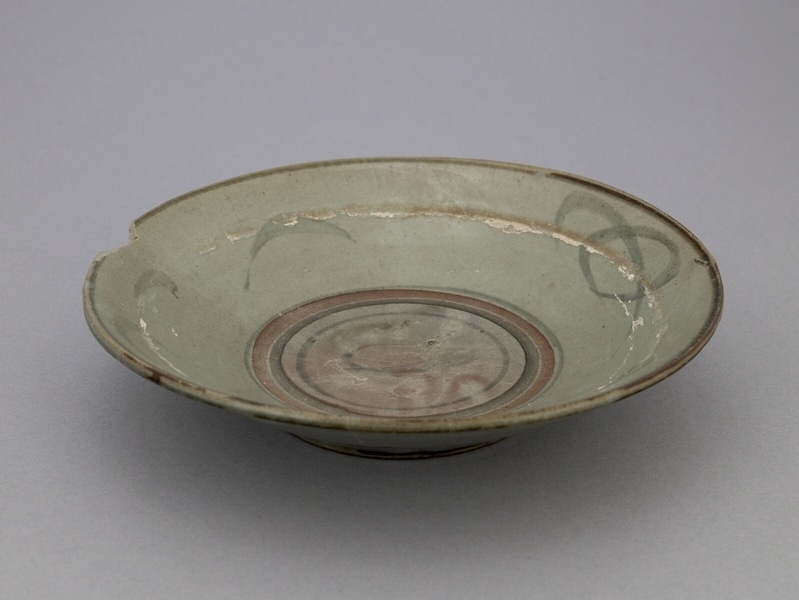Dish Item Number: Edz1037 from the MOA: University of British Columbia



Description
Dish with flared sides on raised foot ring. Grey-green glaze with cursory brushed flourishes and concentric circles of darker green. Unglazed ring above foot reveals reddish body.
History Of Use
Wealthier families owned dishes of this type, perhaps a group of 25, to have on hand for banquets held on festive occasions such as the marriage of a son. They were used for the serving of special festival foods such as stewed pork and stewed mushrooms. Few families were able to own a set of this size, but they would loan them to others and replace them if they were broken.
After the mid-twentieth century the New Territories of Hong Kong began to undergo fundamental changes. The people who had been settled there before 1898, when the British colonizers claimed the area, began to give up rice agriculture and coastal fishing, turning instead to wage labour and increased employment overseas. By the end of the century, educational opportunities leading to the possibility of white-collar work also increased, together with western influences. These changes meant that objects and clothing once useful and appropriate were no longer needed and generally were discarded. Some were saved by their owners, who sometimes were willing to donate them to museums, sharing, also, their knowledge of how they were made and used. As people became wealthier and as many moved from village housing, most banquets have come to be held in restaurants.
Cultural Context
domestic; festival
Specific Techniques
The unglazed circle suggests that the plates were stacked in the kiln.
Narrative
This object is one of a number of old and no longer used objects collected from relatives of Mrs. Yau Chan, Shek –ying. She understood the purpose of the museum and of developing its collections, and encouraged her relatives to donate them. She also documented the objects for MOA based on her remarkable memory because, like most women her age, she had no opportunity to go to school.
Chik Wai Koon Village was about to be destroyed to make way for the development of Shatin new town, and its residents moved to new housing. This dish was kept in the barn of Cheung, Kun-tai. Mrs. Yau said it had been the property of her own father’s sister’s husband’s father. This dish likely was made in the well-known kilns at Wun Yiu, Tai Po. Hakka people are one of the two original land-dwelling groups that settled the area that became the New Territories of Hong Kong. Their spoken language, and some customs, differed from those of the other original group, the Cantonese or Punti. The Cantonese arrived first and settled on the best rice-growing lands, while the Hakka began to arrive after the late 17th century and settled the more hilly lands.
Item History
- Made in Chik Wai Koon, Hong Kong, China
- Collected by Elizabeth L. Johnson during 1980
- Owned by Elizabeth L. Johnson before March 17, 1980
- Received from Elizabeth L. Johnson (Seller) and Museum of Anthropology Shop Volunteers (Funding source) on March 17, 1980
What
Who
- Culture
- Chinese: Hakka
- Field Collector
- Elizabeth L. Johnson
- Previous Owner
- Elizabeth L. Johnson
- Received from
- Elizabeth L. Johnson (Seller) and Museum of Anthropology Shop Volunteers (Funding source)
Where
- Holding Institution
- MOA: University of British Columbia
- Made in
- Chik Wai Koon, Hong Kong, China
When
- Collection Date
- during 1980
- Ownership Date
- before March 17, 1980
- Acquisition Date
- on March 17, 1980
Other
- Item Classes
- ceramics
- Condition
- fair
- Accession Number
- 0610/0007